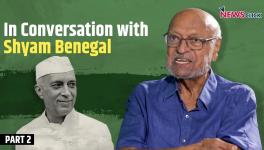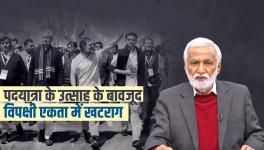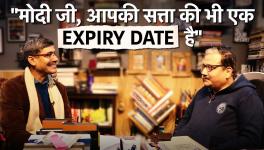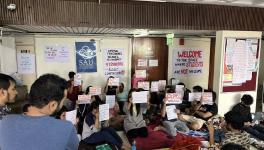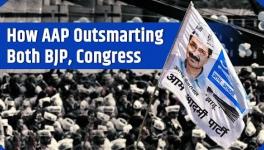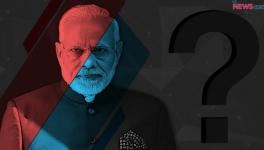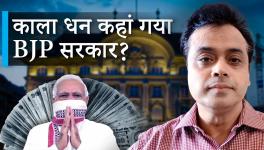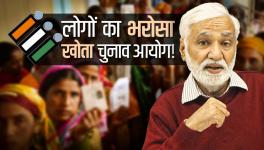Bangladeshisation of Indian Politics
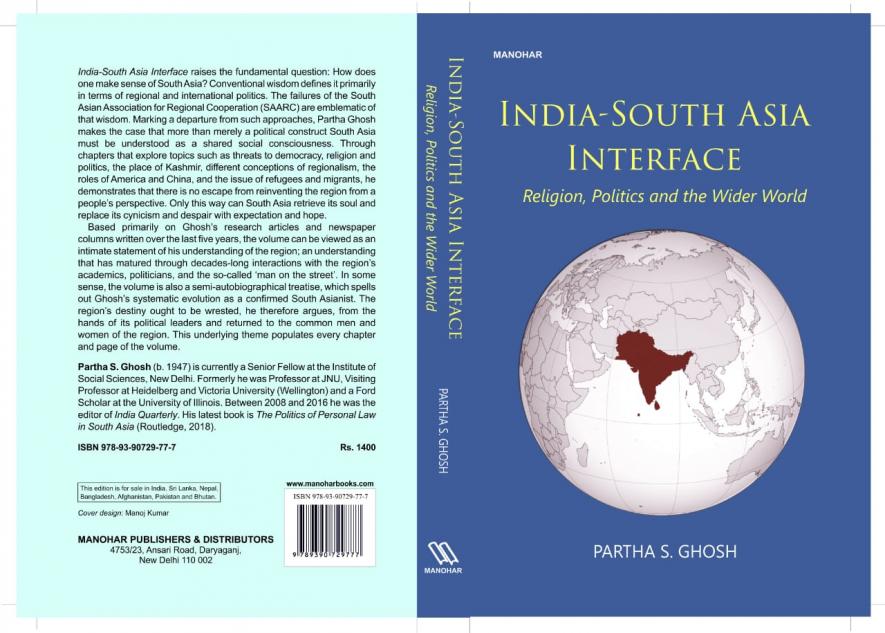
India-South Asia Interface: Religion, Politics and the Wider World raises the fundamental question: How does one make sense of South Asia? Conventional wisdom defines it primarily in terms of regional and international politics. The failures of the South Asian Association for Regional Cooperation (SAARC) are emblematic of that wisdom. Marking a departure from such approaches, Partha Ghosh makes the case that more than merely a political construct South Asia must be understood as a shared social consciousness. Through chapters that explore topics such as threats to democracy, religion and politics, the place of Kashmir, different conceptions of regionalism, the roles of America and China, and the issue of refugees and migrants, he demonstrates that there is no escape from reinventing the region from a people’s perspective. Only this way can South Asia retrieve its soul and replace its cynicism and despair with expectation and hope.
The following is an excerpt from chapter two of the book.
Now that India’s secularism is degenerating into one of competitive Hindutva it is being seen as the Pakistanization of Indian politics. Even the liberal fringe of Pakistan, ever unhappy with all that has been happening in that country, looks at it that way. A musical video clip that went viral some time ago parodied: ‘Alas, you too, turned out to be like us’ (in Urdu: Aap bhi hamare jaise nikle). But this comparison is partially true. In reality the Indian politics more resembles that of Bangladesh. The essential point of similarity between them emanates from their nationalism which is rooted in history. For the same reason they can entertain the luxury of calling themselves secular in constitutional terms but cannot afford the total negation of their majoritarian personas. The result is an acrimonious coexistence of secularism and communalism. The existence of sizeable minorities in both counties, 15 per cent Muslims in India and nine per cent Hindus in Bangladesh, makes this balancing all the move imperative.
These realities are not valid for Pakistan. In terms of nationhood, Bangladesh any day has a better score. It is a textbook case in so far as the national language is concerned, almost all have Bangla as their mother tongue. Even in ethnic terms Bangladeshi Muslims and Hindus are less differentiated. Sociologist Ramakrishna Mukherjee had argued (1976) that if the British rule had not intervened a Bengali nation was almost formed by the end of the eighteenth century. Their easy-going religion, sahajiya, was a blend of Islam and Hinduism. The Prophet Mohammad was seen as an avatar of Allah who was addressed as prabhu, gosain, or niranjan, the Bengali words for the almighty or his incarnation. It was only in the aftermath of the combined Hindu-Muslim revolt of 1857 against the East India Company rule that such words were replaced by Arabic ones with the motive of dividing the Muslims and Hindus, a masterly political strategy of the imperial British. The rest is history. East Bengal became one of the major bases of the Muslim League, which, notably, was launched in 1906 in Dhaka under the auspices of the Nawab of Bengal. It was no surprise, therefore, that these same people would rise in revolt in 1971 against the hijacking of their politics by those sitting in West Pakistan who had little claim to that heritage.
Post-1947 India and post-1971 Bangladesh had marked similarities. If a critical element of the Congress-led freedom struggle of India was its intercommunal partnership so was it for the Awami League’s in the Bangladesh liberation war. The way the British tried to disrupt the Hindu-Muslim unity, the Yahya Khan-led Pakistani junta did exactly the same. It advertised the liberation war as the handiwork of Hindu India and that the Bangladeshi Hindus were its active conduits. To underscore the point the Bengali Hindus were specifically repressed to start with forcing them to flee to India in droves. That explains why about 90 per cent of the refugees in the initial phases of the exodus were Hindu. Curiously, or, predictably, both the British and the Pakistani policies ended up in dividing the countries. But because of the respective heritages of the their liberation struggles India and Bangladesh both opted for secularism as their constitutional commitments.
In multi-religious Third World societies, where state formation tends to precede nation formation, secularism is a difficult ambition to achieve. Notwithstanding their constitutional commitments, therefore, both India and Bangladesh succeeded only partially to adhere to the principle, much less so for Bangladesh. It amended and re-amended its constitution to renege and restore its secularist position. Mercifully, India has not done anything like that so far, but one is not sure any more. The way the militantly ascendant Hindutva forces are asking for a Hindu rashtra the days of India’s secularism may not be ever-lasting. The only saving grace for both India and Bangladesh is that because of historical reasons both the forces of secularism and communalism think that it is politically prudent for them to go slow, thereby reconciling themselves to coexist however antagonistically or competitively.
The cumulative effect of these processes is that both India and Bangladesh have become semi-secular/semi-communal. This is evident in the way the secular Congress or the secular Awami League have conceded to communal demands of the respective majority communities. Or, at another level, both the communal BJP and the communal BNP, have not shed their pro-minority pretensions. Thus while the memories of Jawaharlal Nehru and Mujibur Rehman have become necessary for political use of secularism for the grassroot vote bank requirements they have to be selectively shelved, too. Even Mujib had to make compromises with respect to secularism. In the case of Nehru, though he steadfastly stuck to his credo yet he appeared helpless when at the local levels the foot soldiers of his party had to ask for votes in the name of Hinduism. Nehru’s lament in this regard is on record. His daughter Indira Gandhi, his grandson Rajiv Gandhi, and now his great-grandson Rahul Gandhi have all underscored this reality during their electoral campaigns. The same is true for Mujib’s daughter Sheikh Hasina Wazed or her present challenger Dr Kamal Hossain, who had drafted the secular constitution of Bangladesh, to bring in his fold the communalist Bangladesh Nationalist Party (BNP) and the Jamaat-e-Islami.
In conclusion, let it be said that in both India and Bangladesh it is not only politics that is being communalized, alongside secularism, too, is being politicized. In India in response to BJP’s pro- Hindu innovation in flagging off the Shri Ramayana Express which would transport Hindu pilgrims from Delhi to many Ram-related pilgrim places, namely, Sitamarhi, Janakpur (Nepal), Varanasi, Prayag, Chitrakoot, Hampi, Nasik, and Rameshwaram, the country’s avowedly secular Aam Aadmi Party (AAP) government of Delhi has responded by a secular blitzkrieg. To placate all religions across the board, Delhi’s Chief Minister Arvind Kejriwal, has launched the Mukhyamantri Tirth Yatra. The offer is open to senior citizens of all religions to visit the Golden Temple, Wagah Border, Anandpur Sahib, Vaishnodevi-Jammu, Mathura, Vrindavan, Haridwar, Rishikesh, Nilkanth, Pushkar and Ajmer. Bravo India’s political ingenuity. Are Sheikh Hasina and Kamal Hossain listening?
This is an excerpt from India-South Asia Interface: Religion, Politics and the Wider World written by Partha S Ghosh and co-published by Routledge. Republished here with permission from the publisher.
Partha S. Ghosh is a Senior Fellow at the Institute of Social Sciences, New Delhi.
Get the latest reports & analysis with people's perspective on Protests, movements & deep analytical videos, discussions of the current affairs in your Telegram app. Subscribe to NewsClick's Telegram channel & get Real-Time updates on stories, as they get published on our website.









